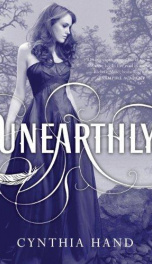Burroughs, Edgar Rice

Edgar Rice Burroughs (1875- 1950) was born in Chicago, Illinois, into a prosperous family. His father, George Tyler Burroughs, was a Civil War veteran. To glamourize his own origins, Burroughs has claimed that he was born in Peking at the time that his father was military advicer to the Empress of China, and lived there, in the Forbidden City, until Burroughs was ten years old. Burroughs attended several private schools, including the Michigan Military Academy, Orchar Lake (1892-95), where he was instructor and assistant commandant (1895-96). He served in the 7th Cavalry in the Arizona Territory (1896-97) and Illinois Reserve Militia (1918-19). During this period he met and heard stories of men who had fought the Sioux and Apache. After his military career Burroughs was owner of a stationery store in Pocatello, Idaho (1898), had dealings with the American Battery Company, Chicago (1899-03). In 1900 he married Emma Centennia Hulbert (divorced in 1934); they had two sons and one daughter).
For the next ten years the family lived in near poverty. Burroughs was associated with Sweetser-Burroughs Mining Company in Idaho (1903-04), was a railroad policeman in Salt Lake, Utah (1904), a manager of a stenographic department at Sears, Roebuck and Company in Chicago (1906-08), a partner of an advertising agency (1908-09), an office manager (1909), a partner of a sales firm (1910-11). In 1910-11 Burroughs worked for Champlain Yardley Company, and from 1912 to 1913 he was manager of System Service Bureau.
Before Tarzan, Burroughs led a life full of failures. The turning point came when he started to write for pulps at the age of 35 - firmly convinced that he could write as rotten stuff as was published in pulp fiction magazines. His first professional sale was 'Under the Moons of Mars', serialized in 1912. It introduced the popular invincible hero John Carter. He is transported to Mars apparently by astral projection, following a battle with Apaches in Arizona. Carter's adventures were published in book form under the title A PRINCESS OF MARS in 1917. The 'Martian' series eventually reached eleven books. Other popular series from Burroughs's pen were The Carson of Venus books, blending romance and comedy, the Pellucidar tales, located inside the Earth, and The Land That Time Forgot trilogy - totalling some 68 titles.
Burroughs's first successful story was 'Dejah Thoris, Princess of Mars' which appeared in 1912 in All-Story Magazine. A few months later in 1912 his breakthrough novel TARZAN OF THE APES appeared, followed by 24 other Tarzan adventures. ''If I had striven for long years of privation and effort to fit myself to become a writer,'' Burroughs later told, ''I might be warranted in patting myself on the back, but God knows I did not work and still do not understand how I happened to succeed.'' In 1913 Burroughs founded his own publishing house Edgar Rice Burroughs, Inc. Burroughs-Tarzan Enterprises and Burroughs-Tarzan Pictures were founded in 1934."If it's any of my business, how the devil did you ever get into that bally jungle?"
"I was born there," said Tarzan, quietly. "My mother was an Ape, and of course she couldn't tell me much about it. I never knew who my father was."
(from Tarzan of the Apes)
The world famous protagonist in Tarzan books is John Clayton, Lord Greystoke, whose aristocratic parents, John Clayton and his wife, Lady Alice, are abandoned on the west coast of Africa by mutinous sailors. Lady Alice dies insane and John Clayton is killed by a great ape named Kerchak. The surviving baby is raised by an ape, Kala, and he learns to read after finding a book in the remnants of his parents' hut. "As he had grown older, he found that he had grown away from his people. Their interests and his were far removed. They had not kept pace with him, nor could they understand aught of the many strange and wonderful dreams that passed through the active brain of their human king." Another party of whites is marooned on the same west coast - the Porters from Baltimore and William Clayton, the present Lord Greystoke. During the tale, Tarzan finds love, and discovers his aristocratic roots. He falls in love with Jane Porter, but in Tarzan of the Apes, Jane rejects his offer of marriage and accepts the proposal of William Greystoke.
Eventually Jane Porter becomes Tarzan's wife, and they also have a son. With the help of animals - mostly elephants and apes - and due to his intelligence and fighting skills, Tarzan gains the unofficial status of the king of the jungle, and immortality through an African shaman's secret formula. In several books the invincible hero is involved with lost races, hidden cultures, or even with an entire lost continent, but he never shows any inclination to take more than his share of fortune. During his long career in the jungle, Tarzan battles against Germans, Japanese, and communists. In the first four books the hero is known variously as "Tar-Zan" ("white-skin" in the ape tongue), "John Clayton," and "Lord Bloomstoke" (later changed to "Lord Greystoke").
In addition to his four major adventure series, Burroughs wrote between the years 1912 and 1933 several other adventure novels, including THE CAVE GIRL (1925), in which a weak aristocrat develops into a warrior, two Western novels about a white Apache, THE WAR CHIEF (1927) and APACHE DEVIL (1933), which showed sympathy for Native Americans, and BEYOND THE FARTHEST STAR (1964), a science-fiction novel about the brutality of war.
Burroughs's science fiction novels are full of a sense of adventure. They take the reader on a fantastic voyage to chart strange and unfamiliar lands as Homer did in his Odyssey. THE LAND THAT TIME FORGOT (1924) is a Darwinist story set on a mysterious island near the South Pole, where dinosaurs and other primitive species have survived. It consists of three novelettes, The Land That Time Forgot', The People That Time Forgot', and 'Out of Time's Abyss'."Before me lay the Lost Sea of Korus, while farther on I caught the shimmering ribbon of Iss, the River of Mystery, where it wound out from beneath the Golden Cliffs to empty into Korus, to which for countless ages had been borne the deluded and unhappy Martians of the outer world upon the voluntary pilgrimage to this false heaven." (from The Warlord of Mars, 1919)
The Barsoom books were set on Mars, where the civilization and nature is dying. John Carter, the major hero, is transported to Barsoom by magical means. In the distant workd he wins the hand of Princess Thoris, a beautiful red woman. The Pellucidar series started from AT THE EARTH'S CORE (1922), in which a group of scientist use their drilling machine to tunnel down into the hollow space at the centre of the planet. As in Jules Verne's A Journey to the Center of the Earth (1864) they find new life forms which have survived for millions of years. Compared to Tarzan, Burroughs's hero has again a rather normal name, David Innes. '"David," said the old man, "I believe that God sent us here for just that purpose--it shall be my life work to teach them His word--to lead them into the light of His mercy while we are training their hearts and hands in the ways of culture and civilization."' (from At the Earth's Core) Pellucidar is lit by a miniature sun which burns in the centre of the hollow. Tarzan also visits this subterranean timeless world in TARZAN AT THE EARTH'S CORE (1930). Burroughs created the Venus sequence, concerning the exploits of spaceman Carson Napier, relatively late in his career, in the 1930s. A posthumous story, 'Wizard of Venus', was published in 1964 and then as the title story of THE WIZARD OF VENUS (1970). Carson of Venus has telepathic powers, Carter is immortal and he can project himself astrally. Fritz Leiber has claimed that Burroughs found in Theosophy a rich source of background materials for Mars books.
In 1919 Burroughs purchased a large ranch in the San Fernando Valley, which he later developed into the suburb of Tarzana. To pay for his expensive lifestyle and to cover his misadventures in financial investments he wrote an average of three novels a year. The first Tarzan film was produced in 1918. When the Olympic swimming champion Johnny Weissmuller took the role in the 1930s, the films became really popular.
In 1933 Burroughs was elected mayor of California Beach. He married in 1935 Florence Dearholt (they divorced in 1942). During World War II Burroughs served as a war correspondent in the South Pacific. He also wrote columns ('Laugh It Off) for Honolulu Advertiser (1941-42, 1945). Burroughs died of a heart ailment on March 19, in 1950, while reading a comic book in bed.
Arthur C. Clarke has said that "I want to go along with Ray Bradbury's views on the importance of Edgar Rice Burroughs. It was Burroughs who turned me on, and I think he is a much underrated writer. The man who can create Tarzan, the best-known character in the whole fiction, should not be taken too lightly! Of course, there's not much left of his Mars, and his science was always rather dubious. I can still remember even as a boy feeling there was something a little peculiar about cliffs of solid gold, studded with gems. I think it might be an interesting exercise for a geology student to see how that phenomenon could be brought about." (Arthur C. Clarke in Greetings, Carbon-Based Bipeds, 1999)
After Burroughs's death, enthusiasm for his books gradually waned. He once admitted to an interviewer: "I don't think my work is 'literature', I'm not fooling myself about that." In 1960s Edgar Rice Burroughs Corporation managed to stir a new interest in the author's work and his books have since been profitably in print. While criticized as repetitious and clumsy, Burroughs's stories share the same colourful imagination familiar from the classic works of H.G. Wells and H. Rider Haggard and have become a target for academic research. Feminist theorists have taken Tarzan very seriously (see below Laura Havaste's work Tarzan and the Mystery of the White Man). However, although Tarzan is definitely a virile primitive and archetypical character, such psychoanalysts as Jung or Freud have not written much about him. John F. Kasson's interpretation in The White Male Body and the Challenge of Modernity in America (2001) brings to the fore "the urge to recover a primitive freedom and wildness." Kasson sees Tarzan as the ultimate self-made, self-taught man, who challenges the restrictions of modern civilization, and shows his own answer to the "new 'crisis' of masculinity".
do you like this author?
What readers are saying
What do you think? Write your own comment on this book!
write a commentWhat readers are saying
What do you think? Write your own comment on this author!
write a commentBook list
What readers are saying
What do you think? Write your own comment on this author!
write a commentGenre
- Books / Children's Books / History & Historical Fiction
- Nonfiction / Politics / General
- Books / Electronic books
- Books / Adventure fiction
- Books / Africa
- Books / Different genres / Literature & Fiction / General / Literary
- Nonfiction / Education / Education Theory / History
- Literature & Fiction / Short Stories
if you like Burroughs, Edgar Rice try:

Suzanne Collins
(Author)

George R R Martin
(Author)

Anne Rice
(Author)

V.C. Andrews
(Author)

E.L. James
(Author)

P.C. and Kristin Cast
(Author)

Christopher Paolini
(Author)

Charlaine Harris
(Author)

Rick Riordan
(Author)

Rachel Caine
(Author)

Philippa Gregory
(Author)

Darren Shan
(Author)
readers also enjoyed
What readers are saying
What do you think? Write your own comment on this author!
write a commentGenre
- Books / Children's Books / History & Historical Fiction
- Nonfiction / Politics / General
- Books / Electronic books
- Books / Adventure fiction
- Books / Africa
- Books / Different genres / Literature & Fiction / General / Literary
- Nonfiction / Education / Education Theory / History
- Literature & Fiction / Short Stories
if you like Burroughs, Edgar Rice try:
readers also enjoyed
Do you want to read a book that interests you? It’s EASY!
Create an account and send a request for reading to other users on the Webpage of the book!






